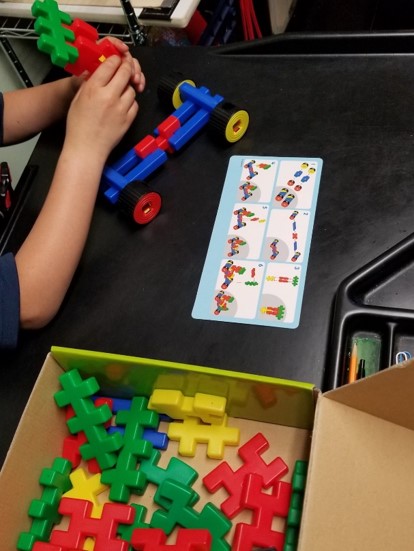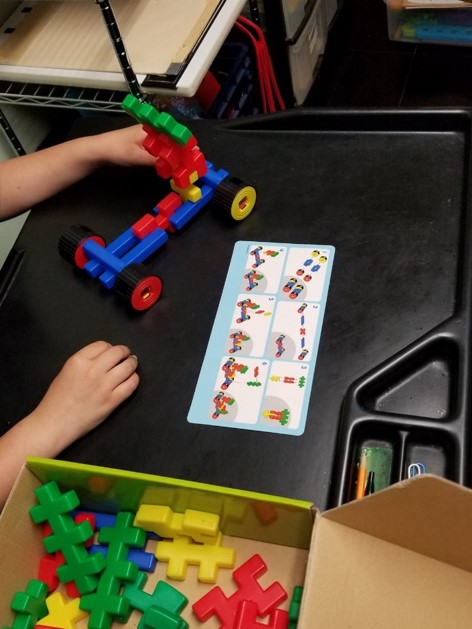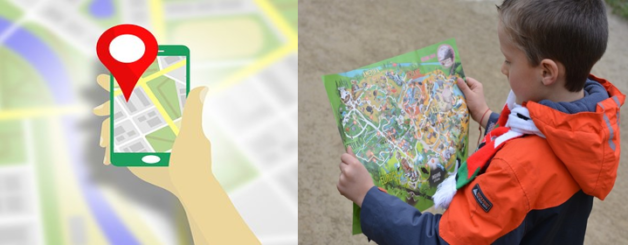Navigational skills – being able to sequentially follow directions does not come easily for persons with Sensory Processing Dysfunction. While many might consider this skill to be somewhat intuitive, developmental theorists have shown us that this skill initially develops in childhood from learning experiences we have with manipulating objects in space.
It is from this basic platform of building and constructing projects that the youngster learns to match shapes with ideas of how objects can be turned to fit together, how an object functions within an assembly, and how to discover basic characteristics that differentiate one object from another.
The ability to understand concepts of how to navigate the environment, how objects fit into the surroundings, and how to manipulate an object to fulfill multiple functions are based upon success with early construction strategies.

Many children who have Sensory Processing Dysfunction (SPD) have difficulty understanding directions. There are several sub-skills involved in being able to translate a visual picture or even spoken instructions into a motor plan of action. Some of these sub-skills include:
Visual discrimination –matching objects based upon the ability to recognize significant features of the objects such as color, size and shape.
Spatial orientation – the ability to position objects based upon how an object is turned relative to the environment (such as in front or in back of, under or over, to the right, left, or side). The ability to use speech and spatial language to describe the location of an object is another key feature of understanding directions.

Another key sub-skill needed for success in understanding directions is termed Visual Association – the ability to match the name of an object with the function that it serves.
When putting objects together to match a picture, where each item goes and how it is turned is critically important to the overall success of the project. This is true whether the child is putting lines together to form a letter of the alphabet, folding clothes to fit into a drawer, or constructing a habitat in a science class.
The ability to associate spatial positions with corresponding words and names impacts success in school, at home, and in social situations such as group sports where concepts of “ in front of”, “in back of”, and “on the side of” result in a sense of competence.

Using construction toys to enhance development of the ability to understand directions can be helpful, especially when the toy is graded to match the skill level of the child.
When choosing toys to address difficulties in visual association, visual discrimination, or spatial orientation skills, you will want to ask :
Is the child interested in this type of toy? If so, the toy is likely to get used and support learning.
Is the toy too easy? If so, the child will quickly become bored and discard the toy.
Is the toy too challenging? If so, the child will quickly lose interest and give up in using the toy.

Does the toy have sufficient levels of challenge so that progress will be seen?
When directions are being given, being able to form a picture in one’s mind, of exactly what is being said is an important feature of learning. This is true for academic, social, emotional and self care aspects of learning as well. This is a skill many children with SPD need assistance with. Using construction toys that have step-by-step directions can be helpful.


One Response to “Understanding Directions”